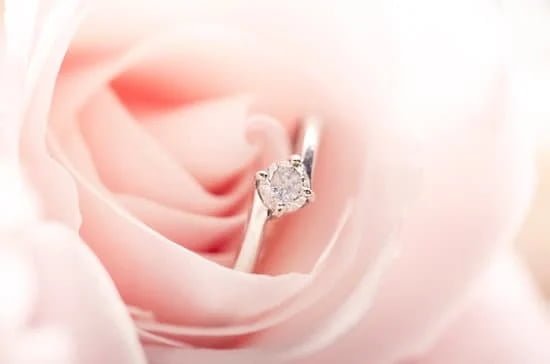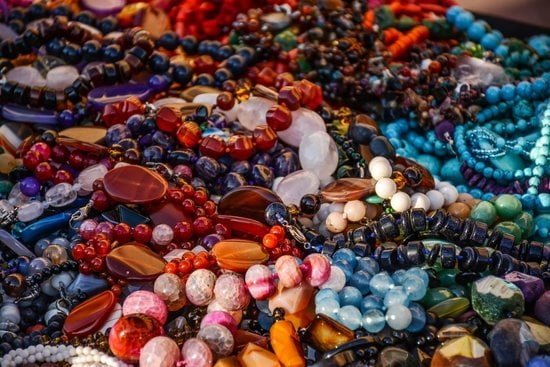The history of shell jewelry dates back to ancient times, with evidence of its use found in various prehistoric and ancient civilizations. From its early beginnings to its enduring popularity in contemporary fashion, shell jewelry has played a significant role in human adornment and cultural expression. In this article, we will explore the fascinating origins, symbolism, and craftsmanship behind shell jewelry, shedding light on its historical significance and timeless beauty.
The use of shell jewelry in prehistoric times reflects the deep connection between early humans and their natural environment. Shell beads and ornaments were often worn as symbols of status or spirituality, highlighting the importance of shells in ancient societies. As we delve into the early beginnings of shell jewelry, we will uncover the cultural and artistic significance of these exquisite artifacts.
From ancient civilizations such as Egypt and Mesopotamia to indigenous cultures around the world, shell jewelry has held a place of reverence and meaning. The materials used, techniques employed, and symbolic meanings attached to shell jewelry reflect the diversity and richness of human creativity across different time periods and geographic locations. Join us as we embark on a journey through history to uncover the captivating story of shell jewelry.
The Early Beginnings
Shell jewelry has a rich and fascinating history that dates back to prehistoric times. The use of shells as adornment can be traced back thousands of years and is a testament to the creativity and ingenuity of early humans. In this section, we will explore the early beginnings of shell jewelry and its significance in ancient cultures.
In prehistoric times, shells were among the first materials used for decorative purposes. Shells were readily available and easy to shape, making them a popular choice for crafting jewelry. Early humans would collect shells from beaches and rivers, then carefully drill holes into them to string them together as necklaces or bracelets. This simple yet elegant form of adornment served not only as a decorative accessory but also as a symbol of status and social hierarchy within ancient communities.
The use of shell jewelry was not limited to one specific region or culture. Archaeological findings have revealed the widespread presence of shell jewelry in various parts of the world, including Africa, Asia, Europe, and the Americas.
This indicates that the practice of adorning oneself with shells was a universal phenomenon among early humans, demonstrating the innate human desire for self-expression and beautification through ornamentation. As we delve into the early beginnings of shell jewelry, it becomes evident that this art form has truly stood the test of time and continues to captivate us with its timeless allure.
- Examples:
- Shell necklaces found in ancient burial sites
- Carvings on prehistoric cave walls depicting individuals wearing shell jewelry
- Artifacts from different regions showcasing unique styles and techniques in creating shell jewelry
Shell Jewelry in Ancient Civilizations
The use of shell jewelry can be traced back to ancient civilizations such as Egypt and Mesopotamia. In these early societies, shell jewelry was not only worn for adornment but also held significant cultural, religious, and spiritual meanings.
In ancient Egypt, shell jewelry was highly valued and worn by both men and women. The use of shells, such as cowrie shells, in jewelry was associated with the goddess of life and fertility, Isis. Shells were believed to symbolize rebirth and protection in the afterlife, making them an essential component of funerary adornments.
In Mesopotamia, the Sumerians also had a deep appreciation for shell jewelry. The city of Ur, for example, revealed rich graves that contained elaborate shell jewelry pieces. These artifacts not only showcased the craftsmanship of the time but also demonstrated the social status and wealth of the individuals buried with them.
Overall, the history of shell jewelry in ancient civilizations is a testament to its timeless allure and cultural significance. The symbolism attached to these pieces and their intricate craftsmanship continue to inspire contemporary designs, making shell jewelry a lasting tradition in the world of accessories.
| Ancient Civilization | Significance |
|---|---|
| Egypt | Symbolized rebirth and protection in the afterlife |
| Mesopotamia | Demonstrated social status and wealth |
The Influence of Shell Jewelry in Indigenous Cultures
Shell jewelry has been an integral part of indigenous cultures around the world for centuries, with deep cultural and spiritual significance. In many indigenous communities, shell jewelry is not merely a decorative accessory, but a reflection of their beliefs, traditions, and connection to the natural world. From Native American tribes to the Aboriginal peoples of Australia, the use of shells in jewelry-making has played a vital role in preserving and celebrating their rich heritage.
In various indigenous cultures, shell jewelry is often adorned with intricate designs that hold specific meanings and symbolism. For example, among the Maori people of New Zealand, Paua shells are used to create stunning jewelry pieces that symbolize strength, resilience, and connection to the sea. In Pacific Island cultures, cowrie shells have been historically valued as symbols of wealth and prosperity, often incorporated into necklaces, bracelets, and headdresses worn during traditional ceremonies and rituals.
Furthermore, the craftsmanship of shell jewelry within indigenous cultures showcases a profound understanding of traditional techniques passed down through generations. The art of making shell jewelry involves meticulous skills such as carving, polishing, beading, and weaving. Each piece is carefully handcrafted using methods that have been honed over centuries, preserving the authenticity and cultural significance of these adornments.
Additionally, the use of local shells and natural materials highlights the sustainable practices adopted by indigenous artisans in their craft. This reflects their deep respect for nature and eco-conscious approach to creating beautiful adornments that honor their cultural identity.
The Renaissance of Shell Jewelry
The popularity of shell jewelry experienced a resurgence during the 19th century and continues to be a prominent fashion accessory in modern times. The fascination with the natural beauty of shells and their use in adornment can be traced back to ancient civilizations, but it was during the 19th century that shell jewelry regained its momentum.
Advances in transportation and exploration allowed for an influx of exotic shells from around the world, leading to a newfound appreciation for their use in jewelry making.
During the Victorian era, shell jewelry became highly fashionable, with intricate designs incorporating shells from distant shores such as cowrie, abalone, and mother-of-pearl. These pieces were often adorned with other precious materials like pearls, creating luxurious and ornate designs that appealed to the fashionable elite of the time.
In modern times, shell jewelry has made a notable comeback in both high-end designer collections and bohemian-inspired accessories. From runways to beachfront boutiques, shell jewelry is celebrated for its connection to nature and its timeless allure.
Contemporary designers continue to experiment with innovative ways of incorporating shells into their creations, from statement necklaces adorned with oversized conch shells to delicate earrings featuring miniature cowrie shells. This enduring appeal speaks volumes about the lasting charm and versatility of shell jewelry throughout history.
| Shell Jewelry | 19th Century |
|---|---|
| Victorian era | Intricate designs with exotic shells |
| Modern times | High-end designer collections and bohemian-inspired accessories |
The Symbolism and Meanings Behind Shell Jewelry
Shell jewelry has been worn and prized for its aesthetic appeal and symbolic significance since ancient times. Across various cultures and civilizations, shells have held deep meanings and have been used to convey important symbols. Understanding the symbolism and meanings behind shell jewelry provides valuable insight into the cultural and spiritual significance of these timeless pieces.
The symbolism of shell jewelry varies from culture to culture, but some common meanings include:
- Protection: In many indigenous cultures, shells are believed to offer protection from negative energies and spirits. As a result, shell jewelry is often worn as an amulet or talisman for protection.
- Fertility: In ancient civilizations such as Greece and Rome, shells were associated with fertility due to their resemblance to female reproductive organs. Shell jewelry was often worn by women hoping to conceive.
- Transformation: Shells are the protective outer layer of marine creatures, making them a symbol of transformation and growth. Wearing shell jewelry can signify personal growth and metamorphosis.
In addition to these specific meanings, shells are also commonly associated with themes of water, femininity, birth, creativity, and abundance in various cultures around the world. This demonstrates the universal appeal of shell jewelry and its deep-rooted symbolism throughout history.
Furthermore, the meaning behind different types of shells is also significant in understanding the symbolism of shell jewelry. For example:
- Cowrie shells are often associated with wealth and prosperity in African cultures.
- Pearl-bearing oysters represent purity and beauty in many societies.
- Turbo shells symbolize spiritual awareness and enlightenment among indigenous peoples.
By exploring the intricate symbolism behind different types of shells used in jewelry making, we gain a deeper appreciation for the cultural diversity and spiritual connections that are woven into each piece. The meanings embedded within shell jewelry enrich our understanding of its significance across time periods and geographical regions.
The Art of Making Shell Jewelry
Ancient Techniques
In prehistoric times, early humans used simple tools such as rocks and bones to drill holes into shells, allowing them to be strung together to create jewelry. As civilizations progressed, more advanced tools and techniques were developed, such as carving intricate designs into shells or using heat to shape them into different forms.
Traditional Methods
In many indigenous cultures, the traditional methods of making shell jewelry have been preserved and continue to be practiced today. These methods often involve gathering shells from the natural environment, then cleaning, shaping, and polishing them by hand before incorporating them into jewelry designs. The use of natural materials in these traditional methods highlights the close connection between the artisan, their culture, and the natural world.
Modern Innovations
With advancements in technology and access to a wide variety of materials, modern shell jewelry artists have found new ways to innovate while still honoring traditional techniques. From using power tools for precision shaping to experimenting with different adhesives for securing shell pieces together, contemporary artisans are able to explore new possibilities while still paying homage to the history of shell jewelry craftsmanship.
The art of making shell jewelry not only serves as a way to create beautiful adornments but also as a means of preserving cultural heritage and connecting with the natural world. The techniques and traditions associated with this craft continue to evolve while providing a link between past and present.
The Enduring Popularity of Shell Jewelry in Contemporary Fashion
Shell jewelry has a rich and ancient history, but its appeal has not diminished over time. In fact, shell jewelry continues to be a popular choice in contemporary fashion, favored for its natural beauty, versatility, and unique aesthetic. From beachside bohemian style to high fashion runways, shell jewelry has remained a timeless accessory that adds an effortless touch of elegance to any outfit.
Modern Designs and Trends
In recent years, there has been a resurgence of interest in shell jewelry, with designers incorporating shells into their collections in innovative and unexpected ways. From delicate shell earrings to statement shell necklaces, modern designs showcase the natural beauty of shells while embracing current fashion trends. Whether it’s minimalist and dainty pieces or bold and oversized creations, shell jewelry continues to evolve with the changing tastes of contemporary fashion.
Celebrity Endorsement
The enduring popularity of shell jewelry can also be attributed to its endorsement by celebrities and influencers. A-listers have been spotted wearing shell jewelry on red carpets and in everyday settings, further solidifying its status as a must-have accessory. This exposure has undoubtedly played a role in bringing shell jewelry back into the spotlight and making it a staple in modern fashion.
Sustainability and Ethical Considerations
As the fashion industry grapples with issues of sustainability and ethical sourcing, there is an increased interest in materials that are environmentally friendly. Shell jewelry, when sourced responsibly, aligns with these values. Its natural origins mean that it is biodegradable and has minimal impact on the environment when harvested sustainably.
This aspect appeals to conscious consumers who are looking for eco-friendly options in their fashion choices. The enduring popularity of shell jewelry can therefore be seen as part of the larger trend towards sustainable and ethical fashion practices.
Conclusion
In conclusion, the history of shell jewelry is a testament to the enduring beauty and significance of this art form. From its early beginnings in prehistoric times to its influence on ancient civilizations and indigenous cultures, shell jewelry has held a special place in human adornment for centuries. The symbolism and meanings behind shell jewelry vary across different cultures, but its timeless appeal has transcended through the ages.
The art of making shell jewelry has been passed down through generations, with various techniques and traditions contributing to the exquisite pieces that are still created today. The enduring popularity of shell jewelry in contemporary fashion reflects its versatility and appeal to modern sensibilities.
As we reflect on the history of shell jewelry, it becomes apparent that its allure lies not only in its aesthetic beauty but also in the cultural significance it holds. Whether as a symbol of fertility, protection, or simply as a reflection of nature’s beauty, shell jewelry continues to captivate people around the world. Its timeless appeal ensures that the art and tradition of shell jewelry will continue to evolve and inspire for generations to come.
Frequently Asked Questions
What Is the Significance of the Shell Necklace?
The shell necklace holds cultural and spiritual significance in many indigenous and coastal communities. It often symbolizes protection, strength, and connection to the ocean and nature.
When Was Shell Jewelry Popular?
Shell jewelry has been popular for centuries, with evidence of its use dating back to ancient civilizations such as the Egyptians, Greeks, and Romans. In more recent history, it became fashionable during the hippie movement of the 1960s.
What Does Shell Mean in Jewelry?
In jewelry, shells are often associated with themes of femininity, birth, renewal, and prosperity. They can also represent a connection to the sea and the natural world, making them a popular choice for those who love beach or nautical-themed accessories.

Welcome to my jewelry blog! My name is Sarah and I am the owner of this blog.
I love making jewelry and sharing my creations with others.
So whether you’re someone who loves wearing jewelry yourself or simply enjoys learning about it, be sure to check out my blog for insightful posts on everything related to this exciting topic!





